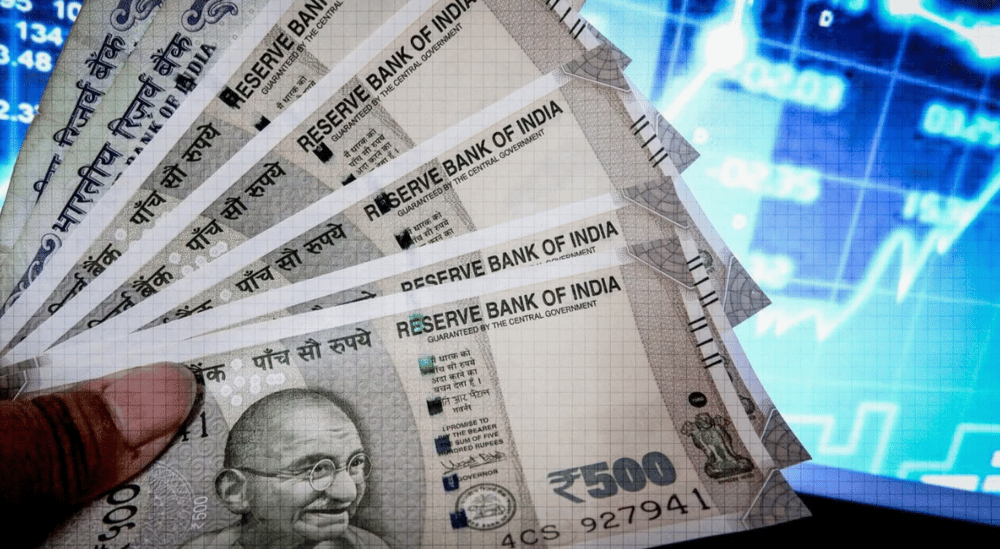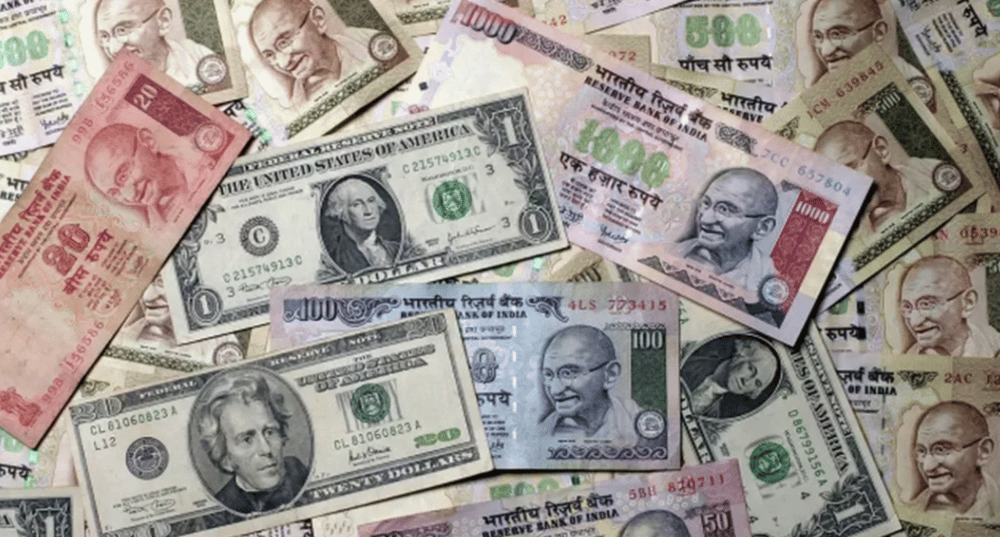INR Weakens Slightly Against USD Despite Regional Currency Gains and Stable Oil Futures
The Indian rupee (INR) is projected to open marginally weaker against the US dollar (USD) on Tuesday, trading within a constrained band, as a lack of directional cues from global markets combines with a broadly stable greenback. Despite upward momentum in regional Asian currencies, the rupee appears less responsive due to underlying structural and macroeconomic factors.
This cautious positioning comes as market participants weigh external pressures—including oil price fluctuations and shifting risk sentiment—with limited domestic catalysts to prompt decisive movement. Onshore and offshore forward indicators signal subdued volatility, with non-deliverable forwards (NDFs) suggesting restrained upside for INR in the short term.
Moderate USD Strength and Narrow Crude Price Action Weigh on INR Volatility
The dollar index (DXY) remains steady as traders await clarity on Federal Reserve interest rate policy amid a data-light week. This has led to a lack of conviction in emerging market FX trades, with the INR showing muted correlation to regional peers.
Brent crude oil futures for one-month delivery opened between USD 85.40 and USD 85.44 per barrel—largely unchanged from the previous close at USD 85.38. The absence of significant moves in energy prices has further dampened volatility expectations for the rupee, which often tracks crude movements due to India’s status as a major importer.
Meanwhile, the offshore Chinese yuan (CNH) appreciated beyond the 7.20 mark versus the USD, while the South Korean won (KRW), Malaysian ringgit (MYR), and Indonesian rupiah (IDR) all posted gains of approximately 0.3%. The rupee, however, failed to replicate this momentum, underscoring its current divergence from the broader regional FX narrative.

INR and Regional Currency Developments
📉 INR Outlook: Expected to open slightly weaker against USD, trade in a tight range
💵 USD Positioning: Stable, limited upside potential in absence of major U.S. economic data
🛢️ Crude Futures: Brent 1M contracts rangebound at ~USD 85.40–85.44
💱 Regional FX: CNH breaches 7.20, KRW, MYR, IDR rise ~0.3%
📊 NDF Signals: Indicate low probability of sharp INR appreciation
Market Sentiment Mixed as INR Tracks Broader EM Currency Divergence
Market sentiment remains bifurcated, with select Asian currencies benefiting from local economic resilience, while others, such as INR, appear tethered to more idiosyncratic domestic factors and global uncertainties.
Traders indicate that India’s upcoming macroeconomic data releases, such as CPI and industrial output, could provide triggers later this week. For now, however, the rupee is seen as anchored within the 83.10–83.30 range against the USD, barring any significant move in either oil or the U.S. Treasury yields.
With portfolio inflows steady but unremarkable and the Reserve Bank of India (RBI) not showing signs of aggressive intervention, short-term speculative activity in USD/INR is minimal. Market positioning remains balanced, suggesting few are willing to take directional bets amid prevailing macro ambiguity.

Key Market Takeaways
INR likely to remain range-bound due to a combination of stable USD and limited domestic catalysts.
Oil prices show minimal impact on rupee sentiment as Brent futures hold steady around USD 85.40.
Regional FX outperformance highlights divergence, with INR underperforming peers like CNH and KRW.
NDF markets imply constrained volatility, with forward pricing suggesting no imminent breakout.
RBI’s passive stance and neutral flows limit INR’s near-term reactivity to global developments.
Rupee Stability Reflects Broader Uncertainty Amid Mixed Regional Signals
While the Indian rupee is typically sensitive to both regional FX trends and commodity price swings, its recent behavior suggests a market in pause mode. The contrast between rising regional currencies and a subdued rupee highlights investors’ cautious approach, shaped by uncertainty over both domestic macroeconomic conditions and the global monetary outlook.
With USD/INR likely to hover within a narrow range absent strong catalysts, traders and institutional players are expected to maintain a wait-and-see approach. Any sustained directional move will likely require either a decisive shift in crude oil prices, a major policy signal from the Federal Reserve, or unexpected volatility in regional capital flows.















Comments
Strategic investments like this are accelerating the evolution of automated systems across industries